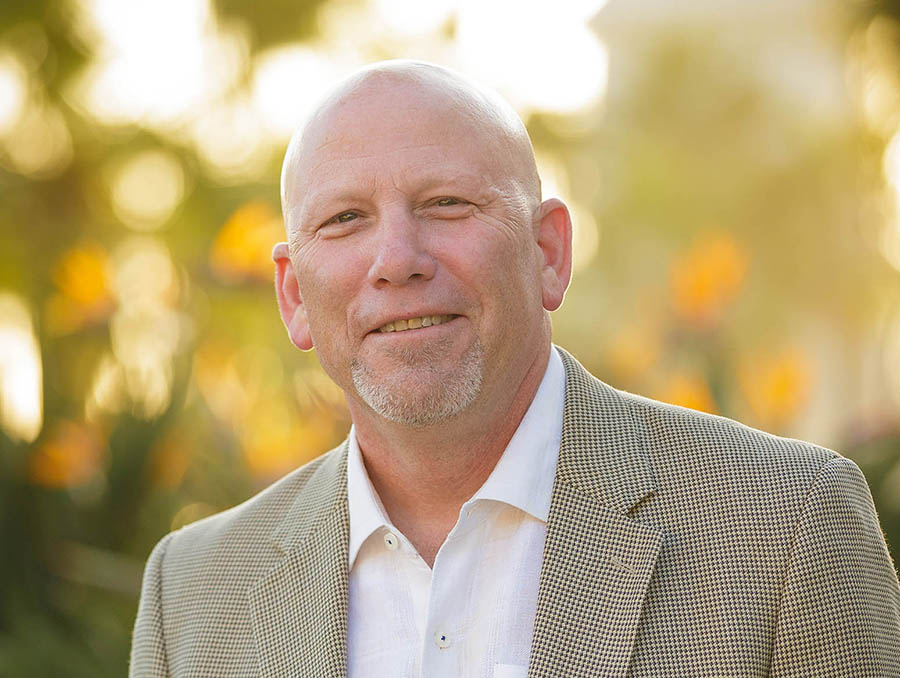The pandemic has created a number of winners and losers over the last two years, with some businesses closing down completely and others doing quite well. For the most part, HVAC contractors fell into the latter category, as consumers invested in new equipment and indoor air quality accessories in order to feel safer and more comfortable while spending a lot more time at home. The same is true in commercial spaces, as building owners began upgrading their ventilation and filtration systems in order to make people feel comfortable about using — or working in — their facilities.
Contractors hope to keep that momentum going this year, but that hinges on being able to obtain the equipment and components necessary for their customers, as well as finding the skilled labor needed to install them correctly.
Supply Chain
Acquiring new equipment and repair components has been a challenge for most contractors, including Keith Paton, vice president of service at Ivey Mechanical Co. in Kosciusko, Mississippi and senior vice chair of ACCA. He said that lead times have increased three to four times their normal delivery schedule, which is straining relationships with customers.

SUPPLY CHALLENGES: Acquiring new equipment and repair components has been a challenge for most contractors, including Keith Paton, senior vice chair of ACCA. (Courtesy of ACCA)
“Customers understand, because we are all experiencing the same type of delays in our daily lives due to the pandemic,” he said. “But they are concerned about the long lead times for equipment delivery and are looking at other options like repairing their existing equipment when it is possible. The increase in equipment prices is also causing our customers to think twice about repairs versus replacement.”
Paton believes that obtaining equipment and components will continue to be an issue in 2022, which will likely keep sales of new equipment flat or slightly down compared to last year. He hopes this issue will ease up towards the end of the year, but until then, his company is stressing the need to have consistent and accurate communication from their manufacturers and suppliers about lead times.
“That way, it is possible to set reasonable expectations for our customers and provide them with the service experience they deserve,” he said.

HIGHER PRICES: Rising equipment prices may spark a renewed interest in preventive maintenance and repair, but Mark Crockett, chair of the MSCA board of managers, does not expect it will affect new sales. (Courtesy of MSCA)
Lead times for everything from computer room air conditioning units to pumps to cooling towers to unitary and rooftop systems have increased dramatically over the past two years, said Mark Crockett, vice president and owner of Crockett Facilities Services in Lanham, Maryland and chair of the MSCA board of managers. And he expects supply chain issues to continue well into 2022.
“Every facet of the industry has been adversely impacted by the pandemic,” he said. “Every part of the supply chain is impacted, which means price increases, as well as longer equipment lead times. Rising equipment prices may spark a renewed interest in preventive maintenance and repair, but I do not expect it will affect new sales. However, scheduling projects amid COVID outbreaks has been challenging, and working through mandatory vaccination policies has only exacerbated the situation.”
Joel Long, CEO and president of commercial divisions of GSM Services in Gastonia, North Carolina and president of PHCC-National Association, believes 2022 has the opportunity to be better than 2021 as the effects of the pandemic start to ease and there is an improvement in the current material/equipment shortages and long lead times. But that remains a big “if.”
“It seems with every new project, we go into search-and-verify delivery mode for our equipment and basic materials,” he said. “Most contractors are now focused on material acquisition as a major part of their success. Prior to the past year or so, this was just something we did. We issued purchase orders and materials showed up when we needed. Now we build our schedules after we have the materials, because we cannot depend on the projected delivery schedules.”
Long expects supply chain issues will improve this year, and he is hopeful the third and fourth quarters of 2022 will show improvement. However, inflation is also weighing on the economy, and customers may pull back accordingly.
“I believe there is a battle occurring between the expanded demand coming out of the pandemic and the pressures of inflation that are causing clients to worry about the future,” he said. “We are hearing a lot of questions about inflation, and if those fears outweigh the need for expansion and improvement, then a slowdown may occur. Higher material prices are already causing customers to rethink the financial return on investments and are making projects less financially attractive.”
The Russian invasion of Ukraine may further upend the supply chain and increase the cost of materials needed to manufacture HVAC equipment. According to a recent report (PDF) by Dun & Bradstreet, “if the conflict continues, the availability of critical raw materials such as natural gas, crude oil, metals, and agri-commodities would be jeopardized and transportation costs would increase. In addition, businesses worldwide may experience further supply chain bottlenecks and increased pricing pressures.”
Opportunities
While there are certainly some challenges this year, contractors are also quick to spot the opportunities. Crockett said that surging demand from the growth of data centers is expected to propel the market this year, as are emerging technologies such as IoT, remote control access, and automated control systems.
“IoT is growing, enabling the systems and appliances we use most to communicate with us in new ways, and HVAC equipment is beginning to incorporate these capabilities,” he said. “For example, HVAC systems can already alert owners when they need a repair or routine maintenance check — even scheduling the appointment on their own.”
Smart buildings are also an increasing priority for facility executives, said Crockett, who pointed to a recent survey that showed more than half integrated multiple building systems in the past year, while 25% plan to integrate smart building equipment with other building technology systems this year. He also expects IAQ to remain a popular topic this year, as end users continue to invest in high-efficiency filtration products and indoor air contaminant removal equipment.
Paton agrees, noting that his company is selling more IAQ products and upgraded controls in response to customers asking for better IAQ in their buildings. As a 100% commercial contractor, he believes that health care will be a strong market this year, while commercial office space will suffer as many employees continue to work from home and companies reduce their office footprints to save on overhead costs.
Long has also seen a huge upswing in health care facility growth in his area, and he believes that trend will continue with the aging of the U.S. population. He also believes multifamily applications will provide major opportunities in sections of the country that are seeing an influx of citizens moving to their states.
“At GSM, we believe in having a diversity of market segments to weather downturns in the economy when a certain segment may hit a snag,” he said. “We also focus on converting new construction customers to long-term service customers. More and more contractors are taking this approach to diversify their risk of a downturn.”
Vice president of service, Ivey Mechanical Co.
Other Issues
Federal and state regulations that affect the HVACR industry have been changing dramatically lately, and there are likely more to come this year. Contractors are paying attention and are concerned about how several will affect their companies, as well as the industry as a whole.
Long, for one, was very relieved that the U.S. Supreme Court stopped the OSHA vaccination mandate, which he felt was an overreach by the Biden administration and put an undue burden on business owners. However, he is not convinced that the mandate is dead, so he plans to keep a watchful eye on that issue. He is also extremely concerned about the push for decarbonization that is taking place across the country.
“This doesn’t make sense to most contractors, because we have built this industry in large part based on giving customers choices,” he said. “Choice and competition lead to lower pricing and better options for consumers, particularly those in low-income housing and the middle class. This political push to stop the use of natural gas in such a swift timeframe will have far-reaching negative effects on our economy. Sure, I can say contractors could adapt to a switch to all electric, but most of our contractors want to be good stewards for our communities, and this swift political push seems unscientific and not founded in economically sound data.”
Paton is also concerned about OSHA mandates, which he believes could have a major impact on his business, as well as the industry. He said he is thankful to be a part of a strong association like ACCA, which prioritizes fighting for and against regulations and legislation that could harm contractors and small businesses. That said, the pandemic will continue to be a challenge that contractors will need to deal with for the foreseeable future.
“It has already changed the way we do business with some companies that require our technicians to be vaccinated before they can work at their facilities,” said Paton. “The virus is likely not going away, the same as the flu, so we are continuing to adjust to the environments that we work in and the customers we serve.”
The labor shortage is another concern that is affecting just about every corner of the HVACR industry. As Paton noted, “It is increasingly harder to find and train new capable technicians, and the lack of interest in the mechanical field is very concerning. To that end, ACCA just launched a new member benefit that will help us find and recruit new talent called CareerPlug.”
Crockett agreed that workforce development challenges, as well as keeping up with technological developments, will continue to be issues in meeting market demand. “Our joint apprenticeship and workforce development programs — locally and nationally — will have to ramp up in scope and resourcefulness to keep us competitive in this expanding market into the future. I have confidence our joint labor and management trustees have the depth of knowledge and experience to do just that."
With everything else going on, it is not surprising that many contractors are not paying much attention to the HFC phasedown.
“There are more pressing issues that we are all facing, including our continued need for more team members to serve our customers, regulations that are being imposed by the local, state, and federal governments due to coronavirus, and supply shortages and delays,” said Paton. “When the HFC phasedown actually starts to affect how contractors do business, they will get more involved.”
Even with all these issues they have to contend with, most HVAC contractors seem to believe the year ahead will be a good one.
“I believe in our industry overall as a wonderful career and opportunity,” said Long. “At our best, we provide careers for our coworkers to improve their families, and at the same time, we strongly improve the lives of our customers. This is an industry that adapts, improves, and is made up of individuals who care deeply about their communities. How could you not be optimistic about that? Also, even though our media seems to find all the negative in the world around us, opportunities are boundless in the United States, and people love to help each other win. The United States is still the best place in the world to be successful, and we are working to keep it that way. So, I guess I am optimistic about the future.”



Report Abusive Comment